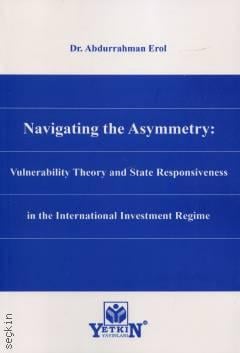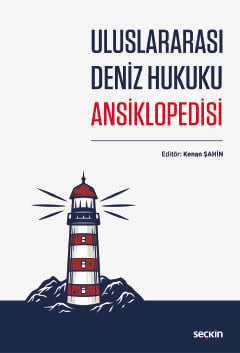
Navigating the Asymmetry
Vulnerability Theory and State Responsiveness in The International Investment Regime
1. Baskı,
Ağustos 2025
Kitabın Detayları
Dili:
İngilizce
Ebat:
16x24
Sayfa Sayısı:
307
Kitabın Fiyatı:
550,00₺
Temin süresi 2-3 gündür.
Kitabın Açıklaması
This research contributes to scholarship by providing an empirical analysis of underexplored offıcial legal and policy documents, as vvell as state approaches to foreign investments and the asymmetrical structure of the international investment regime. it further contributes by proposing an analytical framevvork to uate states' responsiveness to the vulnerabilities of stakeholders beyond foreıgn ınvestors. it highlights the need for systemic change, emphasizing that meaningful reform s collective action by states to ensure that the regime balances the interests of foreign investors with those of broader society.
Kitapla İlgili Kategoriler
Kitabın İçindekileri
Table of Contents
Abstract
v
Özet
vii
Table of Contents
ix
List of Abbreviations
xiii
List of Tables
xv
List of Figures
xvii
1. Introduction
19
1.1. Research Problem
19
1.2. Project Description
24
1.3. Theoretical Background and Methodology
28
1.4. Structure of the Book
32
2. Theoretical and Analytical Frameworks
35
2.1. International Law and Its Humanization
35
2.2. Fineman on Vulnerability
38
2.3. Humanization of the International Investment Regime and the Vulnerability Theory
43
2.4. The International Investment Regime through the Lens of Vulnerability
54
2.5. Assessing State Responsiveness in the International Investment Regime
60
3. Great Power Does Not Always Come with Great Responsibility: Asymmetry in International Investment Law (IIL) Through the Lens of Vulnerability
69
3.1. Introduction
69
3.2. Asymmetry in IIL
75
3.2.1. Asymmetry in International Investment Agreements (IIAs)
75
3.2.1.1. Procedural Asymmetries
76
3.2.1.2. Substantive Asymmetries
86
3.2.2. Asymmetry before Arbitral Tribunals
92
3.3. Clashing Arguments about the Asymmetry
98
3.4. Unjustified Nature of the Asymmetry through the Lens of Vulnerability
106
3.5. Conclusion
115
4. A Noble EffortWindow Dressing? Computational Analysis of Human Rights–related Investor Obligations in IIAs*
117
4.1. Introduction
117
4.2. Human Rights–related Investor Obligations
120
4.3. Methodology
130
4.3.1. Dataset
132
4.3.2. Research Design
133
4.3.2.1. Year
135
4.3.2.2. Location in Treaty Text
136
4.3.2.3. Addressee of the Provision
137
4.3.2.4. Strictness of the Provision’s Language
138
4.3.2.5. Subject Matter of the Obligation
139
4.4. Evolution of Investor Obligations – Turning Tides?
141
4.5. Quality versus Quantity? Analyzing Human Rights–related Investor Obligations
147
4.6. Conclusion
166
5. Policies on Foreign Investment in National Action Plans (NAPs) on Business and Human Rights (BHR): Transformative ChangeReproduction?*
169
5.1. Introduction
169
5.2. NAPs and Foreign Investment Regulation
173
5.3. Comparing Provisions on Foreign Investments in NAPs
180
5.3.1. Assessing NAPs
180
5.3.2. Results
184
5.4. The (not yet fully unleashed) Potential of NAPs
196
5.5. Conclusion
203
6. Decoding Responsiveness at the Crossroads of the International Investment Regime and the BHR Treaty
207
6.1. Introduction
207
6.2. State Responsiveness through Treaty Submissions
210
6.3. The Role of the Intergovernmental Working Group on Transnational Corporations and the Legally Binding Instrument
213
6.4. International Investments in the Drafts
219
6.5. The International Investment Regime in State Submissions to the IGWG
229
6.5.1. The Hierarchy between Human Rights and Investment Obligations
235
6.5.2. Investor Obligations
238
6.5.3. Support for Sustainable and Human Rights–Friendly Investments
240
6.5.4. Concerns and Challenges
242
6.5.5. Interim Conclusions
244
6.6. State Submissions through the Lens of Vulnerability
245
6.7. Conclusion
250
7. Conclusion
253
8. Bibliography
261
8.1. Articles
261
8.2. Books and Book Chapters
276
8.3. Treaties and Declarations
285
8.4. Cases
288
8.5. Official Documents
288
8.6. Websites, News Articles and Blog Posts
293
8.7. UN Documents
300
8.8. Reports and Scholarly Papers
303
8.9. Other
307
Kitabın Fiyatı:
550,00₺
Temin süresi 2-3 gündür.
Hakkımızda
|
Uluslararası Yayınevi Belgesi|
Kaynakça Dosyası|
Kişisel Verilerin Korunması |
Üyelik|
Siparişlerim|
İade Politikası|
İletişim


